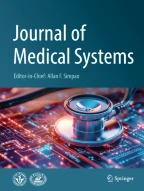Abstract
Wireless medical telemetry systems (WMTSs) are typical radio communication–based medical devices that monitor various biological parameters, such as electrocardiograms and respiration rates. In Japan, the assigned frequency band for WMTSs is 400 MHz. However, the issues accounting for poor reception in WMTS constitute major concerns. In this study, we analyzed the effects of electromagnetic interferences (EMIs) caused by other radio communication systems, the intermodulation (IM) effect, and noises generated from electrical devices on WMTS and discussed their management. The 400-MHz frequency band is also shared by other radio communication systems. We showed the instantaneous and impulsive voltages generated from the location-detection system for wandering patients and their potential to exhibit EMI effects on WMTS. Further, we presented the IM effect significantly reduces reception in WMTS. Additionally, the electromagnetic noises generated from electrical devices, such as light-emitting diode lamps and security cameras, can exceed the 400 MHz frequency band as these devices employ the switched-mode power supply and/or central processing unit and radiate wideband emissions. Moreover, we proposed and evaluated simple and facile methods using a simplified spectrum analysis function installed in the WMTS receiver and software-defined radio for evaluating the electromagnetic environment.
Similar content being viewed by others
Data Availability
No datasets were generated or analysed during the current study.
References
Hanada E., Ishida K., Kudou T., Newly identified electromagnetic problems with medical telemeter systems. Prz. Elektrotech. 94(2):21-24, 2018. https://doi.org/10.15199/48.2018.02.06
Ishida K., Fujii K., Hanada E., Electromagnetic Disturbance Issues in 400 MHz Wireless Medical Telemetry Systems and Its Countermeasures for Safety Operation. Proc of the 2023 XXXVth General Assembly and Scientific Symposium of the International Union of Radio Science (URSI GASS). https://doi.org/10.23919/URSIGASS57860.2023.10265665
Fujii K., Ohno Y., Kido M., Ishida K., Jeong H., Effect of wandering sensing systems on wireless medical telemetry systems. Jpn. J. Med. Inf. vol.38(6):321-336, 2018.
Ishida K., Arie S., Gotoh K., Hanada E., Hirose M., Matsumoto Y., Electromagnetic compatibility of wireless medical telemetry systems and light-emitting diode (LED) lamps. Prz. Elektrotech. 94(2):25-28, 2018. https://doi.org/10.15199/48.2018.02.07
Wu I., Ohta H., Gotoh K., Ishigami S., Matsumoto Y., Characteristics of radiation noise from an LED lamp and its effect on the BER performance of an OFDM system for DTTB. IEEE Trans. Electromagn. Compat. 56(1):132-142, 2014. https://doi.org/10.1109/TEMC.2013.2277596
Ishida K., Wu I., Gotoh K., Matsumoto Y., Evaluation of Electromagnetic Noise Emitted from Light-Emitting Diode (LED) Lamps and Compatibility with Wireless Medical Telemetry Service. IEICE Trans. Commun. E103-B(6):637-644, 2020. https://doi.org/10.1587/transcom.2019HMP0003
Association of Radio Industries and Businesses (2015) STD-21 ed.3.0, Medical telemeter radio equipment for specified low power radio station.
Federal Communications Commission (1999) Wireless Medical Telemetry Service (WMTS).
Lui, P.L., Passive intermodulation interference in communication systems. Electron. Comm. Eng. J. 2(3):109-118, 1990.
Ishida K., Arie S., Wu I., Gotoh K., Matsumoto Y., Evaluation of Electromagnetic Noise Radiated from Tube-type LED Lamps and Its Effect on Wireless Medical Telemetry Systems. Proc. of the EMC Europe 2019.890–895, 2019. https://doi.org/10.1109/EMCEurope.2019.8872012
International Special Committee on Radio Interference (2018) CISPR 15 ed. 9.0, Limits and methods of measurement of radio disturbance characteristics of electrical lighting and similar equipment.
Ishida K., Wu I., Gotoh K., Matsumoto Y., Electromagnetic Compatibility of 400 MHz Radio Communications in Hospitals: Safety Management of Wireless Medical Telemetry J. Med. Syst. 44(9): 154, 2020. https://doi.org/10.1007/s10916-020-01629-z
Ulversoy T., Software Defined Radio: Challenges and Opportunities. IEEE Commun. Surv. Tutor. 12(4), 531-550, 2010. https://doi.org/10.1109/SURV.2010.032910.00019
Ishida K., Novel estimation technique for the carrier-to-noise ratio of wireless medical telemetry using software-defined radio with machine-learning. Sci. Rep. 13(1), 4162, 2023. https://doi.org/10.1038/s41598-023-31225-3
Witter D., Portnoy S., Casamento J., Ruggera P., Bassen H., Medical device EMI: FDA analysis of incident reports, and recent concerns for security systems and wireless medical telemetry. 2001 IEEE Int. Symp. EMC. 1289-1291, 2001. https://doi.org/10.1109/ISEMC.2001.950633
Doost-Mohammady R., Chowdhury KR., Transforming healthcare and medical telemetry through cognitive radio networks. IEEE Wirel. Copmmun. 19(4): 67-73, 2012. https://doi.org/10.1109/MWC.2012.6272425
Electromagnetic Compatibility Conference Japan (2023) Questionnaire Results of Adequate Radio Wave Usage in Clinical Settings. (in Japanese)
Atarashi H., Hirose M., Ide H., Koike S., The current status and issues of medical equipment safety managers 10 years after deployment and the role of clinical engineers. JJMI. 90(3), 245-255, 2020. https://doi.org/10.4286/jjmi.90.245
Kulac S., Determining Threshold Distance Providing Less Interference for Wireless Medical Implant Communication Systems in Coexisting Environments under Shadow Fading Conditions. SDÜ Fen Bil Enst Der. 21(3), 718-723, 2017. https://doi.org/10.19113/sdufbed.00686
Kulac S., Arslan H., Reliable listen-before-talk mechanism for medical implant communication systems. 2016 IEEE 18th International Conference on e-Health Networking, Applications and Services (Healthcom). 1–4, 2016. https://doi.org/10.1109/HealthCom.2016.7749531
Funding
This work was supported by JSPS KAKENHI Grant Number JP 23K09591.
Author information
Authors and Affiliations
Contributions
Conceptualization: K.I.; Methodology: K.I. and E.H.; Validation: K.I. and K.F.; Formal analysis and investigation: K.I., K.H. and E.H.; Writing—original draft preparation: K.I.; Writing—review and editing: E.H.; visualization: K.I.; Supervision: E.H.; Project aministration: K.I.; Funding acquisition: K.I.; All authors read and approved the final manuscript.
Corresponding author
Ethics declarations
Competing Interests
The authors declare no competing interests.
Additional information
Publisher's Note
Springer Nature remains neutral with regard to jurisdictional claims in published maps and institutional affiliations.
Rights and permissions
Springer Nature or its licensor (e.g. a society or other partner) holds exclusive rights to this article under a publishing agreement with the author(s) or other rightsholder(s); author self-archiving of the accepted manuscript version of this article is solely governed by the terms of such publishing agreement and applicable law.
About this article
Cite this article
Ishida, K., Fujii, K. & Hanada, E. Electromagnetic Compatibility Issues in 400-MHz-Band Wireless Medical Telemetry Systems and Their Management Using Simplified Methods for Safe Operation. J Med Syst 48, 72 (2024). https://doi.org/10.1007/s10916-024-02096-6
Received:
Accepted:
Published:
DOI: https://doi.org/10.1007/s10916-024-02096-6
